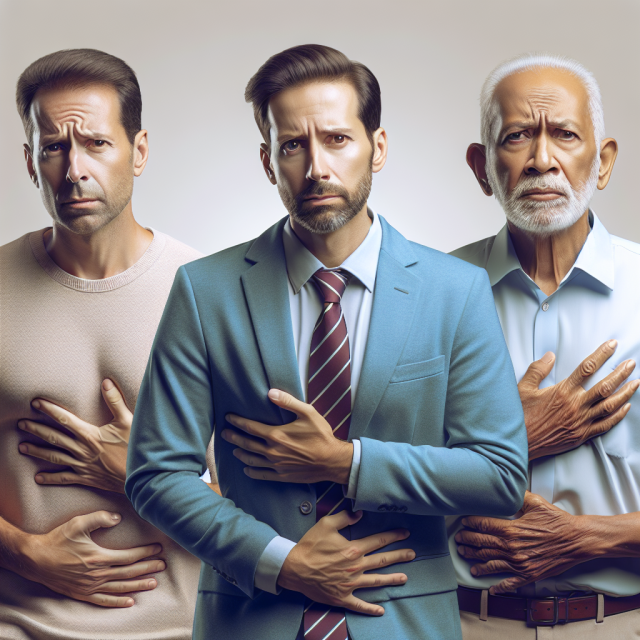

Introduction
Have you ever ignored a subtle health change, thinking it was just part of getting older? Many men do, especially when it comes to urological issues. Yet, some of these symptoms could be early indicators of a more serious condition like prostate cancer. Understanding the common and not-so-common prostate cancer symptoms is crucial for early detection and successful treatment. This article explores what signs to look for and when to seek medical advice.
Table of Contents
- Urinary Changes
- Sexual Function and Related Symptoms
- Pain and Discomfort in Unusual Places
- Advanced Symptoms and Systemic Effects
Urinary Changes
Urinary symptoms are often the first signs that something may be wrong with the prostate. One of the most common complaints is increased frequency of urination, especially at night. Some men may also notice a weak or interrupted urine stream. Others report difficulty starting or stopping urination. These symptoms occur because the prostate, when enlarged or affected by cancer, can press against the urethra.
Additionally, blood in the urine (hematuria) is a red flag that should never be ignored. Although many of these symptoms can also be associated with benign prostatic hyperplasia (BPH), they warrant evaluation by a healthcare provider. Timely investigation can lead to early diagnosis and better treatment outcomes. Monitoring any gradual or sudden changes in urinary habits is vital for men’s health.
Sexual Function and Related Symptoms
Another area impacted by prostate health is sexual function. One noticeable symptom of prostate cancer is erectile dysfunction or difficulty maintaining an erection. While aging can naturally affect sexual performance, a sudden or unexplained change should be discussed with a physician.
Some men may experience painful ejaculation or a significant decrease in the volume of semen. These symptoms might not directly point to cancer but can still indicate an underlying prostate issue. Moreover, persistent pelvic pain, particularly during or after sexual activity, should raise concern. Addressing sexual health issues openly and early allows for better management and peace of mind.
Pain and Discomfort in Unusual Places
Prostate cancer can sometimes present with discomfort beyond the pelvic region. Lower back pain, hip pain, or even pain in the upper thighs can be a sign that the cancer has spread to nearby bones or tissues. These symptoms are often overlooked or attributed to muscle strain or aging.
However, persistent, unexplained pain in these areas should be taken seriously. A thorough medical examination can help determine whether the symptoms are musculoskeletal or related to prostate cancer progression. Because early-stage prostate cancer may not cause noticeable pain, being vigilant about new discomforts is essential.
Advanced Symptoms and Systemic Effects
When prostate cancer advances, symptoms may become more systemic. Unexplained weight loss, fatigue, and anemia are all indicators that the disease may have progressed. Swelling in the legs or pelvic area can also occur due to lymph node involvement.
Additionally, difficulty walking or numbness in the legs and feet may result from spinal cord compression caused by cancer metastases. These advanced symptoms are serious and require immediate medical attention. Catching the disease before it reaches this stage significantly improves the chance of successful treatment. Therefore, awareness and routine screening play a key role in prevention.
Conclusion
Recognizing the top prostate cancer symptoms early can make a life-saving difference. Although many of these signs overlap with less severe conditions, they still merit attention. Regular checkups, open discussions with healthcare providers, and timely testing are all part of an effective prevention strategy.
The sooner prostate cancer is identified, the better the treatment options and outcomes. Staying informed empowers both patients and their support networks to act swiftly and confidently.
For more health insights and patient forums, visit Health.HealingWell.com. For professional guidance, check out Healthcare.pro.
FAQs
What are the most common early symptoms of prostate cancer?
Frequent urination, especially at night, and a weak or interrupted urine stream are common early signs.
Does prostate cancer cause erectile dysfunction?
Yes, it can, particularly if the cancer affects nerves related to sexual function or as a side effect of treatment.
Is back pain a symptom of prostate cancer?
It can be, especially in advanced cases where the cancer has spread to bones like the spine.
How is prostate cancer diagnosed?
Diagnosis typically involves a PSA blood test, a digital rectal exam, and imaging or biopsy if necessary.
Where can I find support if diagnosed with prostate cancer?
Online forums such as Health.HealingWell.com and professional consultations via Healthcare.pro are great resources.
“This content is not medical advice. For any health issues, always consult a healthcare professional. In an emergency, call 911 or your local emergency services.”



